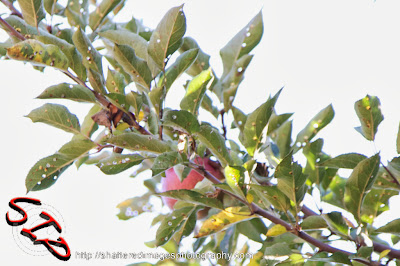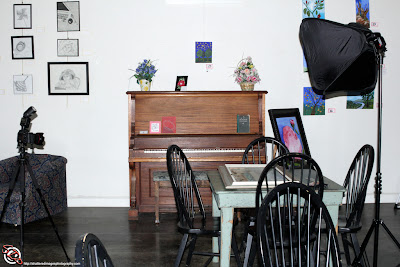 |
| 1/3200th w/ High Speed Sync |
High Speed Sync is a dedicated flash camera function that allows the photographer to use flash in situations where the lighting requires a shutter speed that would otherwise prohibit the use of flash.
Ok that statement is a bit high on the techno speak, so lets look at it a bit differently. In most flash photography shutter speed is pretty irrelevant, the lighting situation is such that the ambient light leaves little or no impression on the sensor and the flash dictates both the exposure and acts to freeze the action. In photography without flash the aperture is used to control depth of field while the shutter acts to control action - a slow shutter shows motion blur and a fast shutter freezes objects in motion. With flash photography even in cases where you are blending with ambient light the flash will still have a tendency to freeze action. This happens because the short, high intensity burn of the flash acts as the effective shutter speed, usually somewhere around 1/1000th of a second depending on flash output.
I mention this because it can be easy to forget if you do not regularly shoot in situations where it is necessary to shoot outside of the cameras sync speed. When the flash is freezing your action for you it is easy to forget that the flash does not function with the camera at shutter speeds above the camera sync - for most cameras this will be 1/250th of a second, though for the EOS 6D that speed is 1/180th. To find your Camera’s sync speed you will need to check the camera's user manual.
Ok since we have established that flash freezes action and it is therefore not necessary to use the shutter to do that then why do you need to be able to use flash with a shutter set above the sync speed? Well sometimes the ambient light you are blending with is just too bright for your camera’s sync speed, this generally means you are shooting in sunlight.
 |
| Second Curtain Closing |
To understand this a little better it lets take a moment to look at how the shutter functions. At and below sync speed the first curtain of the shutter opens completely before the second curtain starts to close, this allows the entire sensor to be exposed at once. At speeds above the camera’s sync speed the second curtain starts to close before the first curtain has fully opened, at higher speeds only a partial strip of the sensor is being exposed at any given moment.
High Speed Sync changes the duration of the flash burn. Instead of the flash firing once the first curtain has cleared the shutter the flash fires a series of pulses and burns for the entire duration of the shutter action. This function allows the flash to be lit for every section of the sensor without the second curtain blocking part of the sensor which happens if the flash fires a single burst.
The Image at the top of the post was photographed using High Speed Sync. That image was taken at 1/3200th of a second, well out side of the camera’s normal sync speed. The next two images show the scene without flash, the first at 1/180th of a second which exposed the apple nicely but completely blew out the sky, the second at 1/3200th which was the speed needed to get proper exposure of the sky but it crushed the apple in shadow leaving it and the leaves quite dark. It would be possible to create an HDR of this scene, but for HDR you really need to be shooting still life. High Speed Sync can create the image in a single exposure and allows blend flash with sunlight, something the regular sync speed does not allow.
 |
| 1/180th no flash |
 |
| 1/3200th no flash |
* Note not all flashes and cameras support High Speed Sync though it is available on Canon, Nikon, and Sony Alpha lines, as well as being supported by some third party flashes. You will need to consult both your camera and flash manuals to see if High Speed Sync is an option for you.
Follow Us










.jpg)